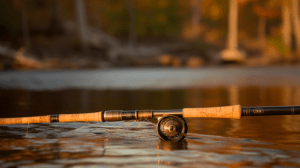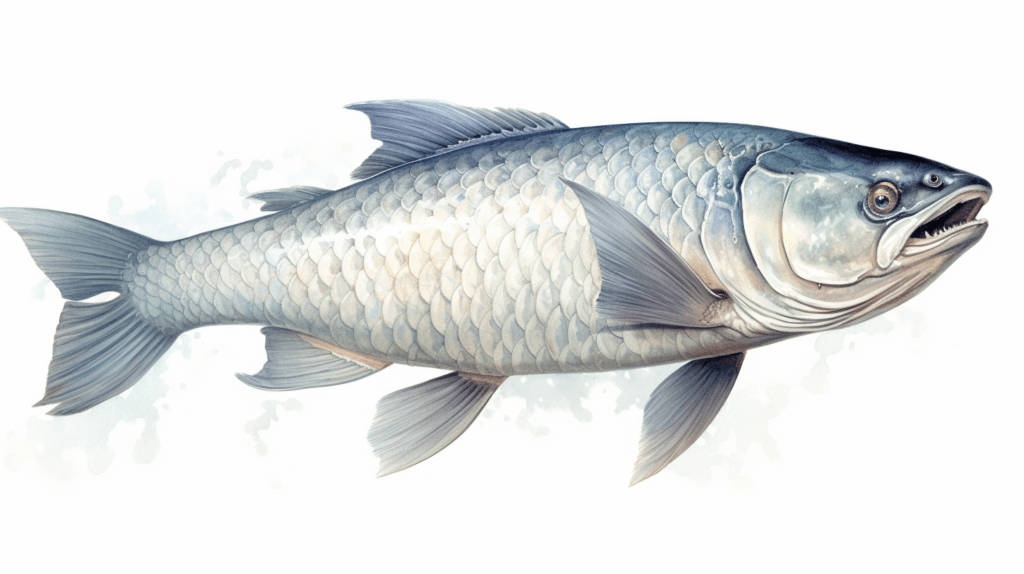Are you looking to take your fishing skills to the next level? Look no further than tarpon fishing.
This challenging and exhilarating sport requires a unique set of skills and gear to master, making it a true art form.
Before diving into the techniques and strategies for catching these elusive fish, it’s important to understand what makes the tarpon such a coveted catch.
Known for their size and strength, tarpon can grow up to eight feet long and weigh over 300 pounds. They are also known for their acrobatic leaps out of the water, providing an exciting visual display for any angler lucky enough to hook one.
With its combination of power and agility, the tarpon is truly a trophy catch – but landing one requires patience, skill, and a deep understanding of this elusive fish.
- Key Takeaways
- Understanding the Tarpon Fish
- Essential Gear and Tackle
- Techniques and Strategies
- Challenges and Risks
- Etiquette and Sportsmanship
-
Frequently Asked Questions
- What is the maximum weight limit for a tarpon to be caught and released?
- How do tarpon migrate and what factors affect their migration patterns?
- Are there any specific regulations or laws that need to be followed while tarpon fishing?
- What kind of bait and lures are most effective for tarpon fishing in different seasons?
- How does the weather and tide conditions impact tarpon behavior and fishing success?
- Conclusion
Key Takeaways
- Tarpon fishing requires unique skills, patience, and understanding of behavior and habits for success.
- Proper gear and tackle, including high-quality rod and reel combo, 30lb test line, and 60-80lb fluorocarbon leaders, are crucial for landing a tarpon.
- Ethical concerns and safety protocols are important in sportfishing, including proper handling techniques, barbless hooks, and respectful treatment of the fish, other anglers, and environment.
- Mindful responsible practices, such as releasing tarpon quickly and safely, cleaning up and disposing of trash properly, and following basic guidelines, are essential for preserving the sport for future generations.
Understanding the Tarpon Fish
You can’t talk about tarpon fishing without understanding the majestic and elusive tarpon fish. The tarpon is a large, silver-colored fish that can grow up to eight feet long and weigh over 200 pounds. They are known for their acrobatic jumps and fierce fights when hooked, making them a popular target for anglers.
Tarpon are found in warm waters around the world, but they’re most commonly found in Florida during the summer months. They’re typically caught using artificial lures or live bait such as shrimp or crabs. Tarpon have a unique mouth structure that makes it difficult for hooks to penetrate, so specialized tackle is often used to increase the chances of hooking one.
When hooked, tarpon will put up an impressive fight by jumping out of the water and thrashing their bodies back and forth. This makes them a thrilling catch for anglers who enjoy a challenge. However, due to their size and strength, it’s important for anglers to be properly prepared with strong gear and tackle before attempting to catch one.
Understanding the behavior and habits of tarpon is essential for successful fishing. Knowing where they feed, how they move with tides, and what types of bait they prefer can make all the difference in hooking one of these elusive fish.
With this knowledge in mind, let’s explore some essential gear and tackle necessary for catching tarpon.

Essential Gear and Tackle
When it comes to tarpon fishing, having the right gear and tackle is essential. You’ll need a strong and reliable rod and reel combo that can withstand the weight of these massive fish.
It’s also important to choose the right line and leader to ensure you have enough strength to handle the fight, as well as hooks and baits that will entice these elusive creatures.
Rods and Reels
Using a high-quality rod and reel is crucial for successfully catching tarpon, as it allows you to accurately cast your line and effectively fight the fish once hooked. When selecting a rod, look for one that is specifically designed for tarpon fishing and can handle the weight of these powerful fish. A good tarpon rod should be at least 8-9 feet long, have a fast action, and be made of strong materials such as graphite or fiberglass.
In terms of reels, choose one with a large arbor spool to hold plenty of backing line. You’ll want a reel with a strong drag system that can handle the intense runs and jumps that tarpon are known for. Look for reels with sealed drag systems to protect against corrosion from saltwater exposure.
Here’s a table breaking down some popular rod and reel choices among tarpon anglers:
| Rods | Reels |
|---|---|
| St. Croix Legend Elite Tarpon | Shimano Stella SW |
| Sage Salt HD | Van Staal VR Series |
| G Loomis NRX+ Saltwater | Penn Slammer III |
| Orvis Helios 3D | Abel Super Series |
Now that you have an idea of what kind of rods and reels work well for tarpon fishing, let’s move on to discussing lines and leaders.

Lines and Leaders
Selecting the right line and leader is crucial for successfully hooking and landing tarpon. When it comes to tarpon fishing, you need a line that can handle their size and power while still providing enough sensitivity to detect bites.
A good starting point is a 30-pound test line with a weight-forward taper that allows for long casts and precise presentations.
Leaders are also important in tarpon fishing as they serve as the connection between your mainline and your bait or lure. Fluorocarbon leaders in the range of 60-80 pounds are common choices due to their abrasion resistance, low visibility, and high strength-to-diameter ratio. Additionally, using a shock tippet at the end of your leader can help absorb any sudden jerks or jumps from the tarpon during the fight.
Transitioning into our next section about hooks and baits, keep in mind that selecting the right hook size and type will depend on factors such as water conditions, baitfish size, and personal preference.
Hooks and Baits
To catch more tarpon, you’ll want to make sure your hooks and baits are the right size and type for the conditions. Tarpon have bony mouths that can be difficult to penetrate, so it’s important to choose a hook that is strong and sharp enough to set firmly. Circle hooks are often preferred by experienced tarpon anglers because they tend to hook in the corner of the mouth, reducing the risk of gut-hooking or injuring the fish.
In addition to choosing the right hook, selecting the appropriate bait can significantly increase your chances of catching a tarpon. Live bait such as mullet or pinfish is often used because it mimics natural prey and is more enticing than artificial lures. However, if live bait isn’t available or preferred, artificial lures like swimbaits or topwater plugs can also be effective.
Experimenting with different types of hooks and baits in various conditions will help you determine what works best for you as an angler. Now let’s move on to techniques and strategies for successfully landing these elusive game fish.
Techniques and Strategies
One of the most crucial aspects of successful tarpon fishing is mastering a variety of techniques and strategies. Tarpons are known for their acrobatic jumps and powerful runs, making them a challenging catch.
One popular technique is sight-fishing, which involves spotting tarpons in shallow waters and casting a bait towards them. It requires patience, as one must wait for the perfect opportunity to cast the line.
Another effective strategy is chumming, where fishermen throw chunks of bait into the water to attract tarpons. This method can be done from a boat or shore and can increase the chances of catching these elusive fish. Additionally, using live bait such as crabs or mullet can also lure in tarpons.
It’s important to keep in mind that different conditions call for different techniques. For instance, when fishing in deep waters, it’s recommended to use heavier equipment and focus on trolling instead of casting. When it comes to timing, early mornings or late afternoons tend to be better times to fish as tarpons are more active during these periods.
Mastering various techniques and strategies can greatly improve your chances of successfully catching tarpons. However, there are still challenges and risks involved in this type of fishing that need careful consideration.
Challenges and Risks
Now that you’ve learned about various techniques and strategies for tarpon fishing, it’s important to understand the challenges and risks involved in this art.
Tarpon fishing is not for the faint of heart as it requires a lot of patience, skill, and physical endurance.
Firstly, one of the greatest challenges in tarpon fishing is locating them. Tarpons are known to be elusive creatures that can be found in both shallow flats and deep waters. They are also highly migratory, making it difficult to predict their movements. Therefore, an angler must rely on their knowledge of tides, weather conditions, and patterns to increase their chances of finding these elusive fish.
Secondly, once a tarpon has been hooked, the fight is far from over. These fish are known for their power and agility which makes them incredibly difficult to reel in. The fight can last anywhere from minutes to hours depending on the size and strength of the fish. It’s important to have proper gear such as a strong rod with a high-quality drag system to ensure that you don’t lose your catch.
Lastly, there are several risks associated with tarpon fishing such as injury or harm to both anglers and fish alike. When handling tarpons, they should be treated with care as they have sharp gill plates that can easily injure an angler’s hands or arms. Additionally, improper handling techniques can cause harm or even death to these magnificent creatures.
To minimize these risks while maximizing your chances of success when tarpon fishing consider:
- Researching locations beforehand so you know where they tend to spawn
- Being patient because catching them takes time
- Ensuring proper equipment before embarking on any journey
By following safety protocols while being mindful of ethical concerns surrounding sportfishing practices like catch-and-release policies, we can enjoy this hobby without causing unnecessary harm or endangerment.
As you venture into the world of tarpon fishing further, it’s important to understand the etiquette and sportsmanship involved in this art.
Etiquette and Sportsmanship
It’s important to maintain proper etiquette and sportsmanship while engaging in this thrilling activity of tarpon fishing. This means respecting the fish, other anglers, and the environment around you. Here are some key rules to follow:
| Do | Don’t |
|---|---|
| Do be respectful of other anglers’ space and equipment. | Don’t cast over or into someone else’s line. |
| Do release the tarpon quickly and safely after catching it. | Don’t keep the fish out of water for too long or mishandle it. |
| Do clean up after yourself and dispose of any trash properly. | Don’t leave your garbage behind or damage the area around you. |
By following these basic guidelines, you’ll ensure that everyone enjoys their time on the water, while also preserving this amazing sport for future generations.
In addition to these general rules, there are a few specific things to keep in mind when targeting tarpon specifically. First and foremost, always use barbless hooks when possible – this reduces harm to both the fish and yourself if something goes wrong during hook removal.
Another important consideration is how much pressure you put on the fish during the fight – remember that tarpon are incredibly strong creatures with delicate internal organs that can easily be damaged by excessive force.
Finally, try not to take more than one or two shots at each fish – repeatedly casting at a tarpon can cause them unnecessary stress and reduce their chances of survival after being released.
Etiquette and sportsmanship might seem like small considerations compared to the sheer excitement of landing a giant silver king, but they’re crucial aspects of responsible fishing that should never be overlooked.
By following these guidelines, you’ll help ensure that everyone has an enjoyable day on the water while protecting our precious natural resources at the same time!
Frequently Asked Questions
What is the maximum weight limit for a tarpon to be caught and released?
You can catch and release a tarpon weighing up to 200 pounds. However, it’s recommended to release larger fish quickly to minimize stress and increase their chance of survival. Proper handling techniques are crucial for the safety of both you and the tarpon.
How do tarpon migrate and what factors affect their migration patterns?
Tarpon migrate seasonally, primarily in response to changes in water temperature and food availability. They typically move along coastlines and may travel hundreds of miles, with some individuals returning to the same spawning grounds each year.
Are there any specific regulations or laws that need to be followed while tarpon fishing?
When tarpon fishing, you must follow strict regulations and laws, such as obtaining a permit and releasing all tarpon over 40 inches. Use non-offset, non-stainless steel circle hooks and avoid handling the fish excessively to ensure their survival.
What kind of bait and lures are most effective for tarpon fishing in different seasons?
To catch tarpon in different seasons, use live bait such as crabs, shrimp or mullet. In summer, topwater plugs work well while in winter deep diving lures are effective. Vary the retrieve speed and presentation to entice bites.
How does the weather and tide conditions impact tarpon behavior and fishing success?
To increase your chances of successful tarpon fishing, pay attention to weather and tide conditions. Tarpon often feed more actively during changing tides and on cloudy days. Choose lures that mimic their prey and adjust your techniques accordingly.
Conclusion
Congratulations on completing this in-depth study of the art of tarpon fishing! By now, you should have a solid understanding of the nature and behavior of these magnificent fish, as well as the gear and techniques required to catch them. With practice and patience, you can become a skilled tarpon angler.
However, it’s important to remember that with great power comes great responsibility. As an ethical sportsman or sportswoman, you must always prioritize the safety and wellbeing of both yourself and the fish. This includes following proper etiquette when fishing in public areas, releasing caught fish back into their natural habitat whenever possible, and respecting local regulations regarding catch limits and seasons.
By mastering the art of tarpon fishing while maintaining a respectful and responsible approach to the sport, you can enjoy a fulfilling pastime that connects you with nature while also contributing to conservation efforts.
Happy fishing!

